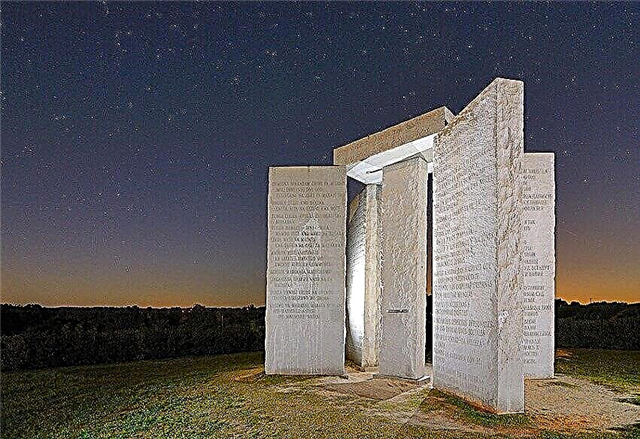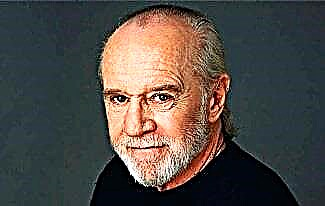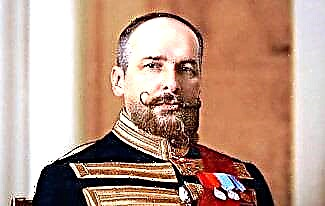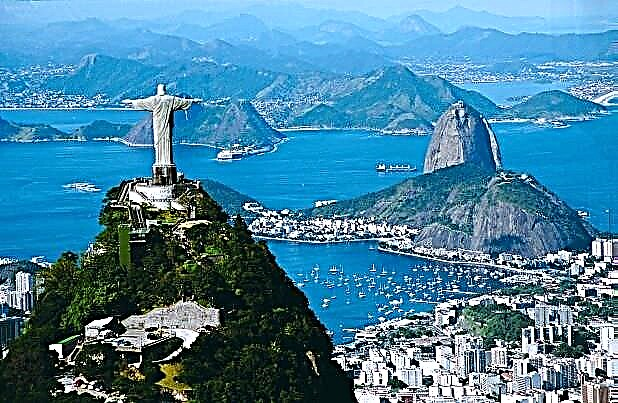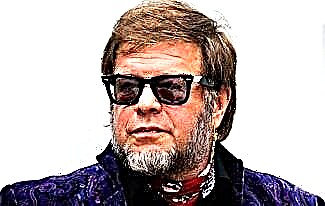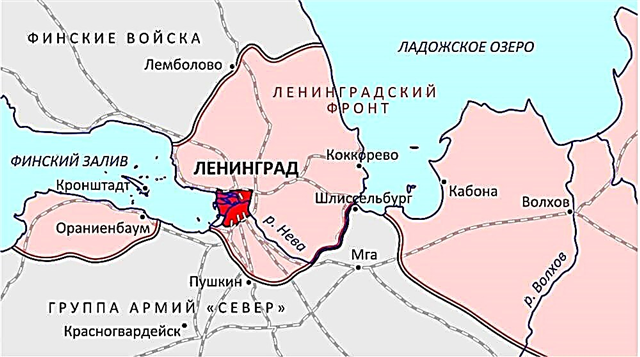Zinovy Bogdan Mikhailovich Khmelnitsky - Hetman of the Zaporizhzhya Troops, commander, political and statesman. The leader of the Cossack uprising, as a result of which the Zaporizhzhya Sich and Left-Bank Ukraine and Kiev were finally separated from the Commonwealth and became part of the Russian state.
The biography of Bohdan Khmelnitsky is replete with interesting facts from personal and public life.
So, before you is a short biography of Khmelnitsky.

Biography of Bohdan Khmelnitsky
Bohdan Khmelnitsky was born on December 27, 1595 (January 6, 1596) in the village of Subotov (Kiev Voivodeship).
The future hetman grew up and was brought up in the family of Mikhail Khmelnitsky, the Chigirin under-star. His mother, Agafya, was a Cossack. Both of Bogdan's parents came from a gentry family.
Childhood and youth
Historians do not know much about the life of Bohdan Khmelnytsky.
Initially, the teenager studied at the Kiev fraternal school, after which he entered the Jesuit collegium.
While studying at the collegium, Bogdan studied Latin and Polish, and also comprehended the art of rhetoric and composition. At this time, the biographies of the Jesuits could not induce the student to abandon Orthodoxy and convert to the Catholic faith.
At that time Khmelnitsky was lucky to visit many European states.
Serving the King
In 1620 the Polish-Turkish war began, in which Bohdan Khmelnytsky also took part.
In one of the battles, his father died, and Bogdan himself was captured. For about 2 years he was in slavery, but he did not lose his presence of mind.
Even in such cramped circumstances, Khmelnytsky tried to look for positive moments. For example, he learned Tatar and Turkish.

During their stay in captivity, relatives were able to collect a ransom. When Bogdan returned home, he was enrolled in the registered Cossacks.
Later Bohdan Khmelnitsky took part in naval campaigns against Turkish cities. As a result, in 1629 the hetman and his soldiers captured the outskirts of Constantinople.
After that, he and his squad returned to Chigirin. The authorities of Zaporozhye offered Bogdan Mikhailovich the post of the centurion of Chigirinsky.
When Vladislav 4 became the Polish head, war broke out between the Polish-Lithuanian Commonwealth and the Muscovite Kingdom. Khmelnitsky went with the army to Smolensk. In 1635 he managed to free the Polish king from captivity, receiving a golden saber as a reward.
From that moment, Vladislav treated Bogdan Mikhailovich with great respect, sharing state secrets with him and asking him for advice.
It is curious that when the Polish monarch decided to go to war against the Ottoman Empire, Khmelnytsky was the first to know about it.
Quite controversial information has been preserved about the time of the military conflict between Spain and France, in particular about the siege of the Dunkirk fortress.
The chronicles of that time confirm the fact that Khmelnytsky participated in negotiations with the French. However, nothing is said about his participation in the siege of Dunkirk.

Having unleashed a war with Turkey, Vladislav 4 sought support not from the Diet, but from the Cossacks, under the leadership of Khmelnitsky. The hetman's squad was faced with the task of forcing the Ottomans to start a war.
The Polish monarch honored Bohdan Khmelnytsky with a royal charter, which allowed the Cossacks to recover their rights and regain a number of privileges.
When the Seim learned about the negotiations with the Cossacks, the members of parliament opposed the agreement. The Polish ruler was forced to retreat from his plan.
Nevertheless, the Cossack foreman Barabash saved the letter for his colleagues. After some time, Khmelnitsky took the document from him by cunning. There is an opinion that the hetman simply forged the letter.
Wars
Bohdan Khmelnitsky managed to take part in various wars, but the national liberation war brought him the greatest fame.
The main reason for the uprising was the violent seizure of territories. Negative moods among the Cossacks also caused inhuman methods of struggle of the Poles.

Immediately after Khmelnitsky was elected hetman on January 24, 1648, he organized a small army that plundered the Polish garrison.
Thanks to this victory, more and more people began to join the army of Bogdan Mikhailovich.
The recruits took a crash course in military training, which included military tactics, working with different types of weapons and hand-to-hand combat. Later Khmelnitsky made an alliance with the Crimean Khan, who provided him with cavalry.
Soon, the son of Nikolai Potocki went to suppress the Cossack revolt, taking with him the required number of soldiers. The first battle took place at Yellow Waters.
The Poles were weaker than Khmelnytsky's squad, but the war did not end there.
After that, the Poles and Cossacks met at Korsun. The Polish army consisted of 12,000 soldiers, but this time, too, it could not resist the Cossack-Turkish army.
The war of national liberation made it possible to achieve the desired results. Massive persecutions of Poles and Jews began in Ukraine.
At that moment, the situation got out of control of Khmelnitsky, who could no longer influence his fighters in any way.
By that time, Vladislav 4 had died and, in fact, the war had lost all meaning. Khmelnitsky turned to the Russian tsar for help, wishing to stop the bloodshed and find a reliable patron. Numerous negotiations with the Russians and the Poles had no effect.

In the spring of 1649, the Cossacks began the next phase of hostilities. Bohdan Khmelnitsky, possessing a sharp mind and insight, thought out the tactics and strategy of the battle to the smallest detail.
The hetman surrounded the Polish fighters and regularly raided them. As a result, the authorities were forced to conclude the Zboriv peace, not wanting to bear any more losses.
The third phase of the war broke out in 1650. The resources of the hetman squad were depleted every day, which is why the first defeats began to occur.
The Cossacks signed the Belotserkov Peace Treaty with the Poles, which in turn contradicted the Zboriv Peace Treaty.
In 1652, despite the treaty, the Cossacks again unleashed a war, from which they could no longer get out on their own. As a result, Khmelnitsky decided to make peace with Russia, swearing allegiance to her sovereign Alexei Mikhailovich.
Personal life
In the biography of Bogdan Khmelnitsky, 3 wives appear: Anna Somko, Elena Chaplinskaya and Anna Zolotarenko. In total, the couple gave birth to the hetman 4 boys and the same number of girls.
Stepanid's daughter Khmelnitskaya was married to Colonel Ivan Nechay. Ekaterina Khmelnitskaya was married to Danila Vygovsky. Having become widowed, the girl remarried to Pavel Teter.

Historians did not find exact data on the biographies of Maria and Elena Khmelnitsky. Even less is known about the hetman's sons.
Timosh died at the age of 21, Gregory died in infancy, and Yuri died at the age of 44. According to some unauthorized sources, Ostap Khmelnitsky died at the age of 10 from the beatings he suffered.
Death
Bohdan Khmelnitsky's health problems began about six months before his death. Then he thought about who would be best to join - the Swedes or the Russians.

Sensing an imminent death, Khmelnitsky ordered to make his son Yuri, who was then barely 16 years old, his successor.
Every day the leader of the Cossacks was getting worse and worse. Bohdan Khmelnytsky died on July 27 (August 6) 1657 at the age of 61. The reason for his death was a cerebral hemorrhage.
The hetman was buried in the village of Subotov. 7 years later, the Pole Stefan Czarnetsky came to this region, who burned the whole village and desecrated the grave of Khmelnitsky.

